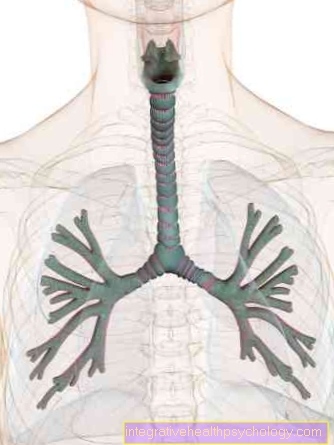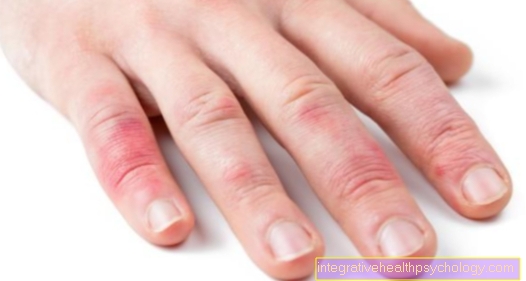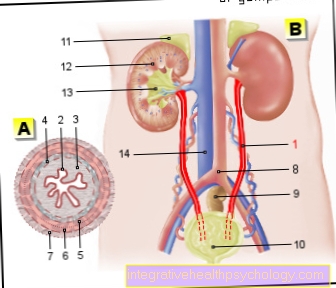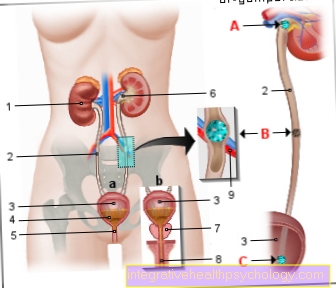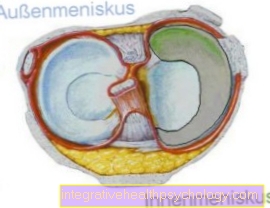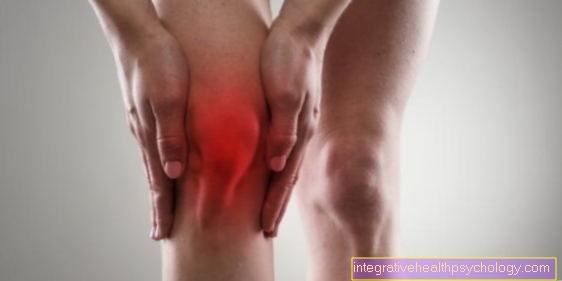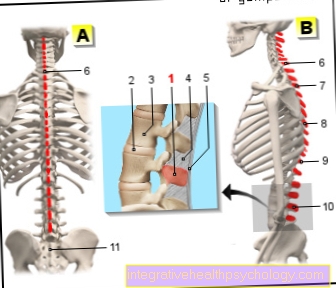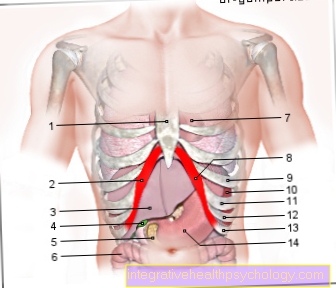Swelling after an apicectomy
introduction
The apicectomy is one of the last attempts to save a tooth, but even after the procedure, swelling is not abnormal.
Studies have shown that a root tip resection has an over 80% chance of success after 5 years.

But what are the causes of the symptoms that can arise after the operation, and how pronounced can the reaction be? Has the procedure failed at the same time and the tooth is no longer worth preserving, or has the tip resection a sustainable and good form of therapy that gives the affected tooth a good prognosis?
Causes of swelling after apicectomy
The swelling after a root tip resection can have various causes. Postoperative wound closure usually results in swelling of the treated area. This swelling is caused by the fact that in order to reach the root tip, the gums have to be cut open with a scalpel and detached from the bone. As a result, the layers of tissue are traumatized and can swell after suturing as they heal.
This swelling is a small swelling that disappears quickly. Accordingly, it is part of the healing process and is not a sign of a failed procedure.
If severe swelling manifests itself and shows a tendency to spread, infection of the wound edges is often the cause. This infection can already be caused by the bacteria in the saliva. The bacteria settle on the edges of the wound and if the immune system cannot fight them, they cause local inflammation.
It can also be the case that not all pathogens below the root tip have been removed during the root tip resection and complete disinfection fails. Then the original apical periodontitis, the local inflammation below the root tip, forms again and can spread.
In addition, a cyst can form from it, which causes severe discomfort.
Learn more about: A swollen cheek - what does it mean?
Diagnosis of swelling after apicectomy
The diagnosis of swelling after apicectomy does not have to involve removal of the tooth.
If not all bacteria below the root tip have been removed during the resection, the root tip resection can be performed again to combat the infection. As a rule, however, you give the body a certain amount of time to regenerate and there is a chance that the inflammation will subside again. A dose of antibiotics can also be helpful.
In a second procedure, the root tip is often from below (retrograde) closed (this is already done with the 1st intervention) in order to be able to guarantee sterility.
If this attempt fails and the swelling does not recede, but rather expands, the only thing that can ultimately be removed is the affected tooth in order to stop the infection.
Tooth extraction is the very last resort if no other therapeutic approach works.
Read more about this at: Tooth extraction
Which accompanying symptoms are possible?
In addition to the swelling of the tissue, the typical signs of an inflammatory reaction can crystallize.
The wound turns red (= rubor) and heats up (= calor). The affected person feels a great improvement and relief of the symptoms with cold drinks and meals. Furthermore, the swelling (= tumor) is sensitive to pressure and hurts (= tremor) when touched.
In addition, there is a loss of function, which corresponds to the condition that the inflammation inhibits the actual function of the tissue. This can be expressed in that the mouth opening is restricted or a jaw clamp occurs when opening and the mouth can hardly be closed.
Furthermore, the swelling can show a tendency to spread. It can expand in such a way that the throat area is restricted, swallowing difficulties occur, and it is painful to eat food. If the spread is not stopped, airway obstruction can occur. The patient cannot breathe and can no longer breathe freely, making the condition life-threatening.
The swelling can also spread to other areas, causing the eye, roof of the mouth, or maxillary sinuses to swell and hurt. The inflammation always seeks the path of least resistance.
You might also be interested in: Inflammation after apicectomy
Painful swelling after apicectomy
After an apicectomy, swelling with accompanying pain is a common symptom. The traumatized wound edges and the inflammation below the root tip can hurt and expand after the procedure. The swelling is overly sensitive to light pressure and can cause tenderness.
The inflammation can redden the affected area and cause burning discomfort. Cold drinks and foods like ice cream can relieve and minimize pain. With the process of wound closure, however, all pain disappears and the gums calm down, provided there are no complications, such as an infection.
Treatment after the swelling with an apicectomy
After a root tip resection, a tooth can be healed of the inflammatory reaction so that it is again considered a full member of the dental arch. After the procedure, the tooth is checked at regular intervals in order to follow the healing process. After the wound has closed and the gums have healed, the bone below the tip of the root also regenerates. The shortened root tip can be completely enclosed by bone again within 6 months and grow into place.
In order to strengthen the tooth, it can be crowned after this time to protect it so that it does not break off. Furthermore, if the degree of loosening remains, it can be splinted to the neighboring teeth so that it develops strength again.
If the healing process does not develop optimally and the swelling persists, the tooth can definitely be resected. In this case, after about 2 months, the gums are reopened to remove the inflammation below the tip of the root. Even after the repeated attempt, the prognosis of the tooth can be quite positive.
If the tooth is not symptom-free after the procedure, the only option that remains in the last instance is extraction and the tooth must be removed. The healing process can be prolonged and persistent, making it daunting for the patient, but every effort should be made to preserve the tooth as removal is a great loss and should only be seen as a last resort.
How long does swelling last after the apical resection?
Swelling after a successful apicectomy, in which all bacteria below the apex has been removed, does not last longer than 2-3 weeks. After the wound has closed after the suture has been removed and the wound begins to heal, the swelling recedes completely. The final adjustment of the gums and the entire soft tissue can take months. The bony closure below the root tip can also last 6 months until the root tip is completely anchored in the bone again.
However, swelling should then no longer occur. If it still occurs, the apicectomy was unsuccessful. Wound closure can be delayed or not take place at all due to inflammation of the wound or insufficient removal of the infected tissue below the root tip. The inflammation can manifest below the tip of the root or it can spread and cause swelling to increase.
This swelling. which is mostly filled with pus, if left untreated, it can expand even more and pass into vessels, so that this results in diseases that affect the whole body. The bacteria can reach the heart and circulation through the blood vessels and cause sepsis, a generalized inflammation that is potentially life-threatening. If this blood poisoning is not treated, the body quickly initiates defense reactions such as fever and chills, which are only sufficient to fight the disease in 50% of cases. An immediate doctor's visit is necessary with such symptoms.
What to do if the swelling doesn't go down
If the swelling does not subside, the attending dentist should be visited as soon as possible to find out the cause. If the swelling spreads and causes swallowing or breathing problems, the abscess that has formed must be treated through an incision. The incision is a relief cut that drains the pus that is in the swelling so that the tissue can regenerate. Drug therapy with antibiotics can be helpful. This should be discussed with your family doctor.
Swelling of the eye due to apicectomy?
Postoperative swelling of a tip resection in the upper jaw can quickly expand. The targeted injury to the soft tissue can become infected by bacteria after the wound is sutured and cause swelling or an abscess. The bacteria multiply and form pus. If the infection is not stopped with medication (antibiotics), the swelling can spread to the eye.
The lower eyelid is primarily affected, which is heavily thickened and affects the person concerned. Just touching it with one finger can be uncomfortable. If this swelling does not recede, the pus inside the abscess must be drained through a relief incision so that the infection does not spread further and thereby trigger systemic complications such as cardiovascular problems. In the case of swelling around the eyes, the earlier you go to the doctor, the better.
You can find more about this at: abscess
Swelling of the gums after an apicectomy
With a tip resection, the gums must be cut open with a scalpel in order to reach the tip. Cutting and opening the gums traumatizes and irritates the gums, so that swelling can occur on the edges of the wound after the procedure, which can become inflamed. The signs of inflammation cause wound pain, the region in the gums becomes red and thick and tender.
However, this swelling disappears completely after one to two weeks. Antibiotics can help before the operation so that the bacteria have no chance of infecting the wound.
Swelling on the palate after the apicectomy
Swelling of the palate is also possible in the upper jaw. This reaction after surgery is realistic, provided that the roots of the maxillary teeth on the palate are removed. Then the surgical access to the root is made on the roof of the mouth and the tip of the root is removed.
By opening the gums with a scalpel (or an electrotome) to reach the tip of the root, the tissue is traumatized and can swell. The swelling on the palate is particularly uncomfortable because there is little tissue directly on the bony surface and the swelling causes great pressure pain.






